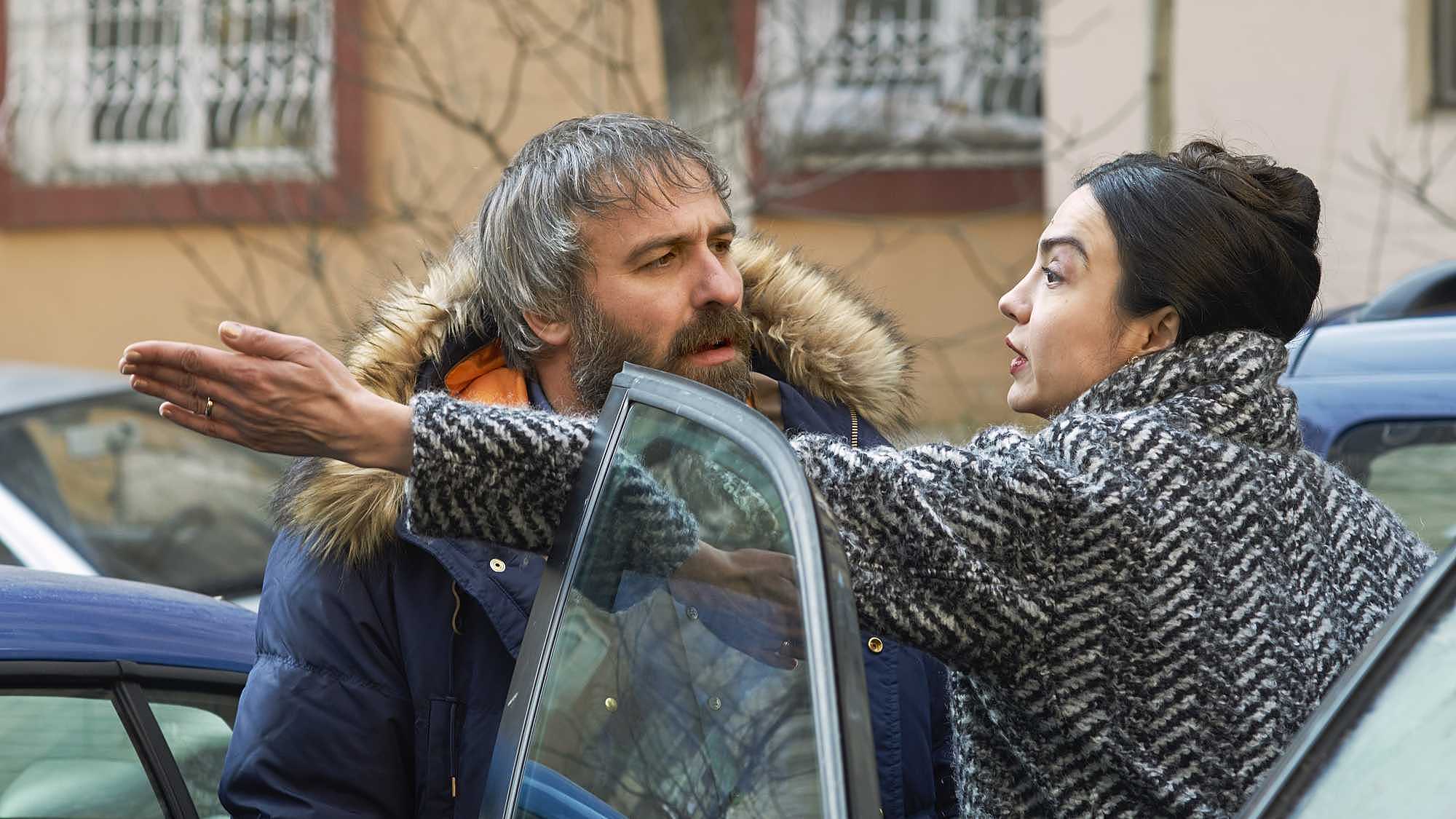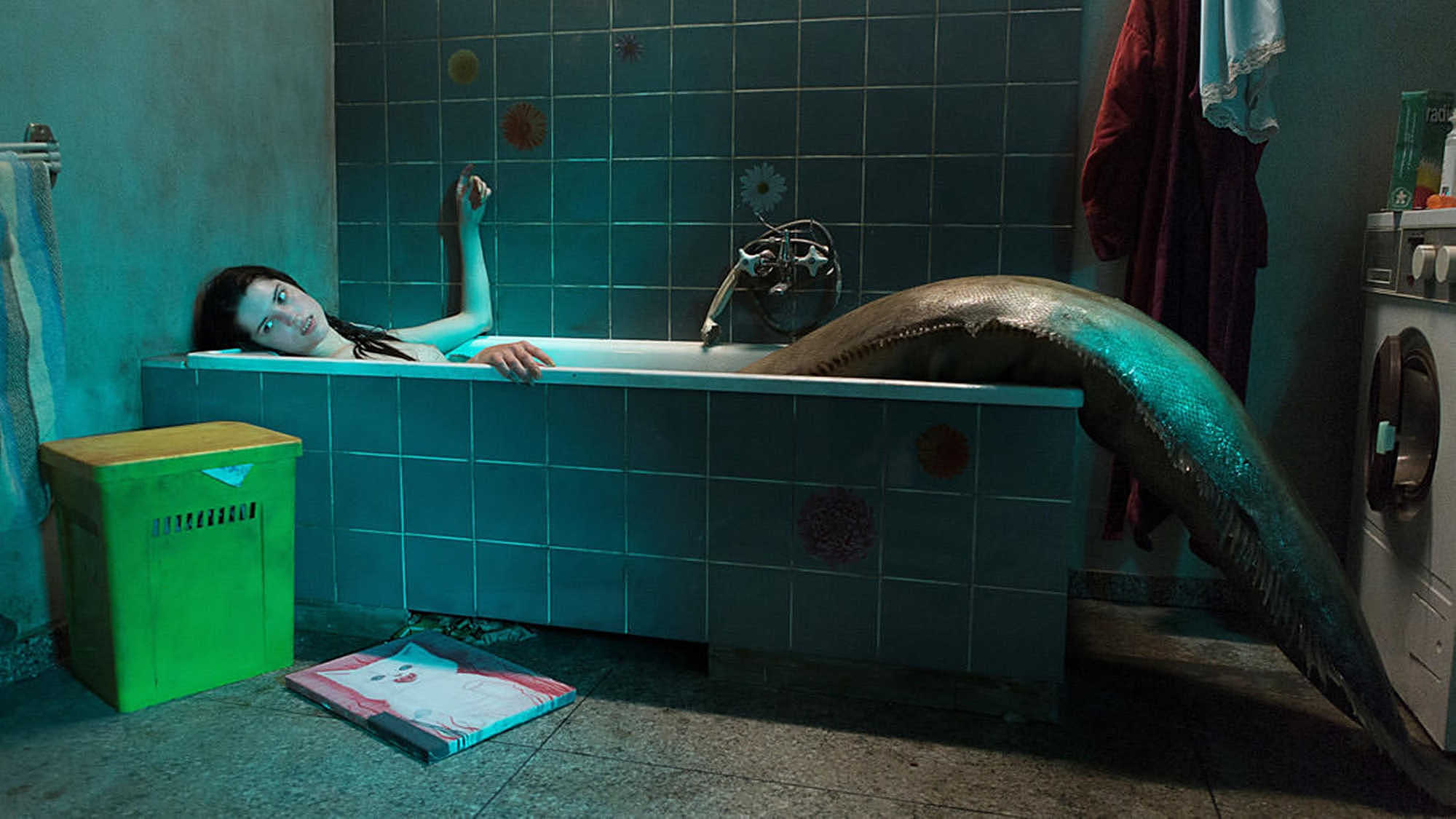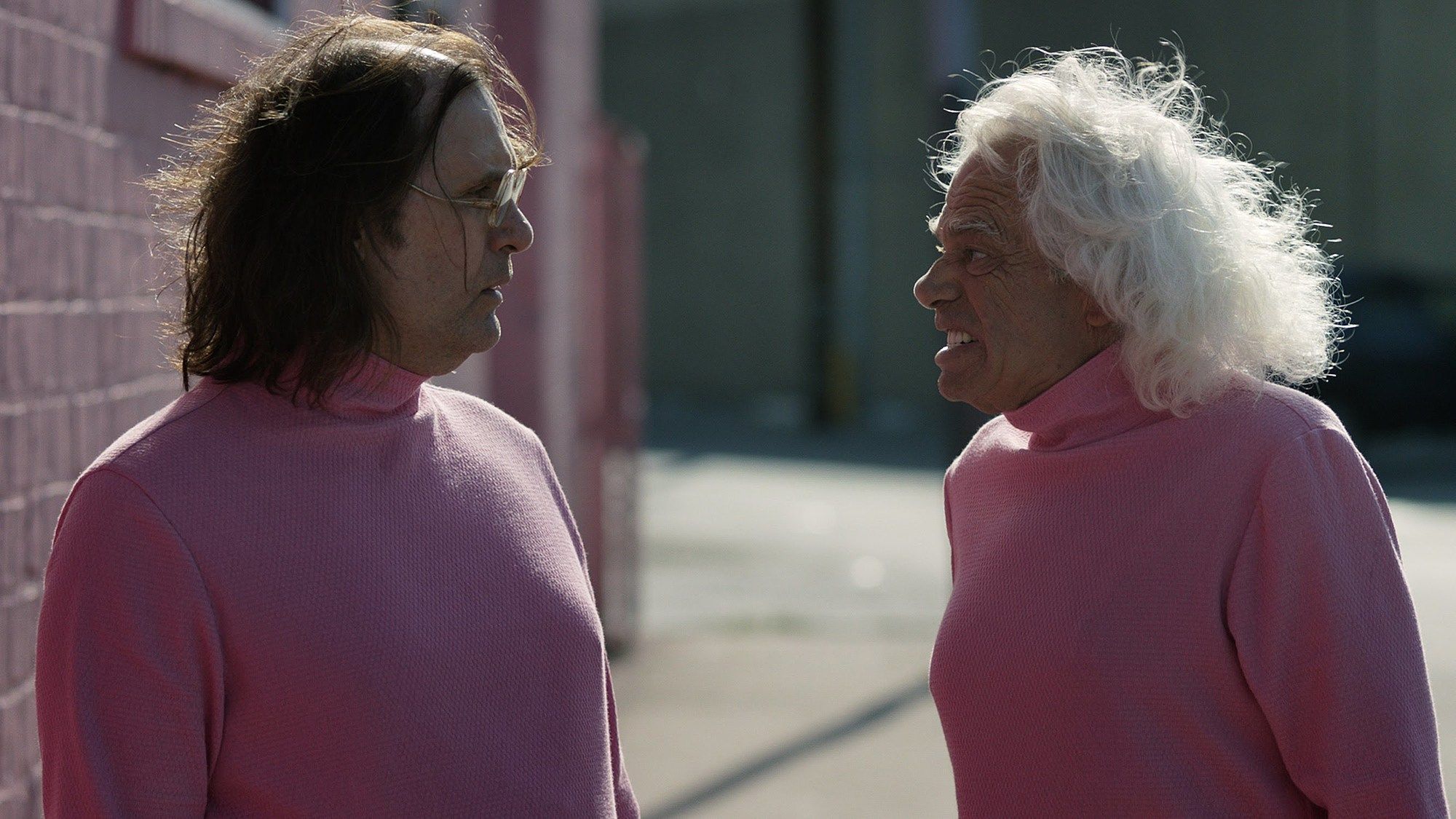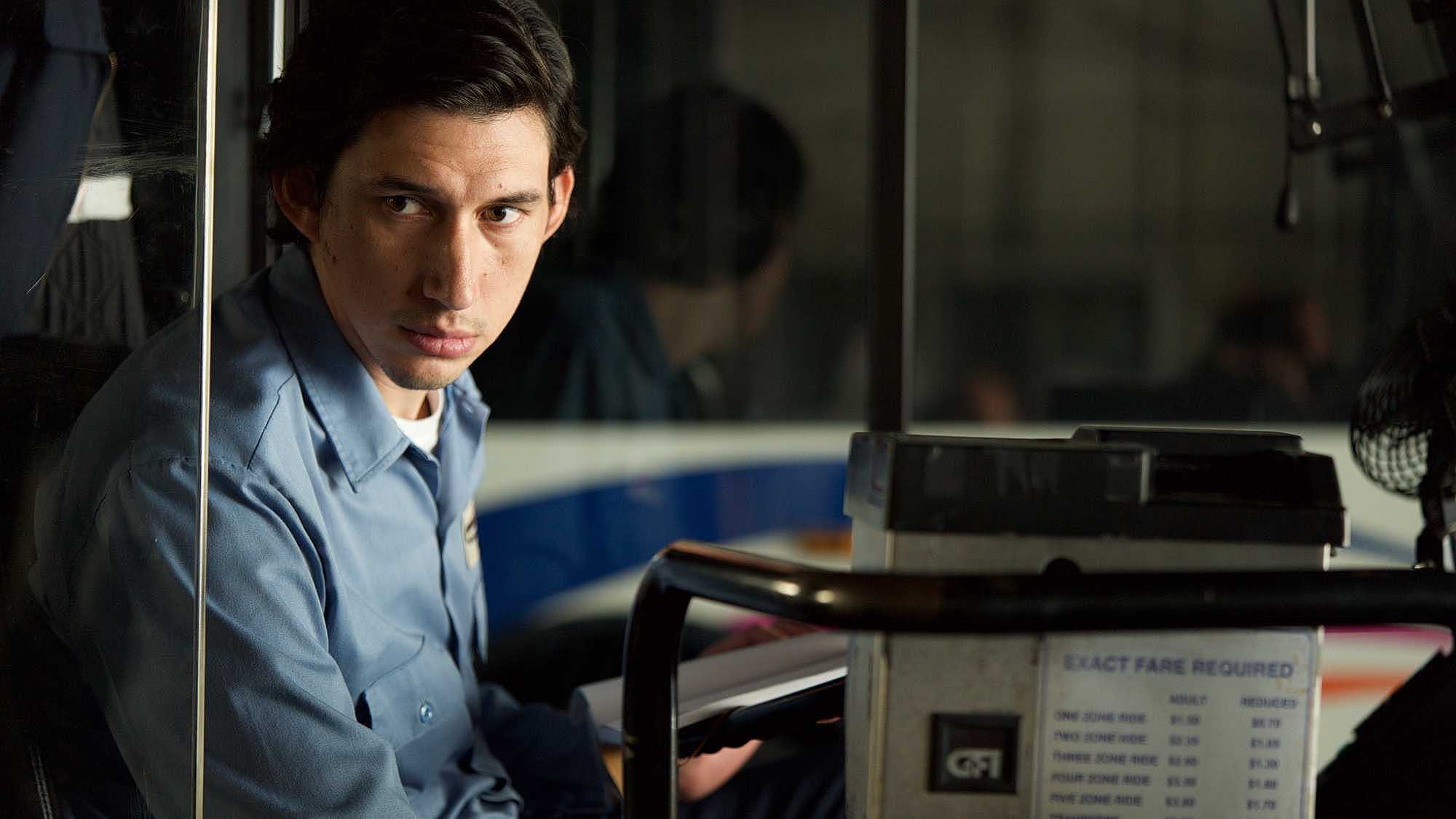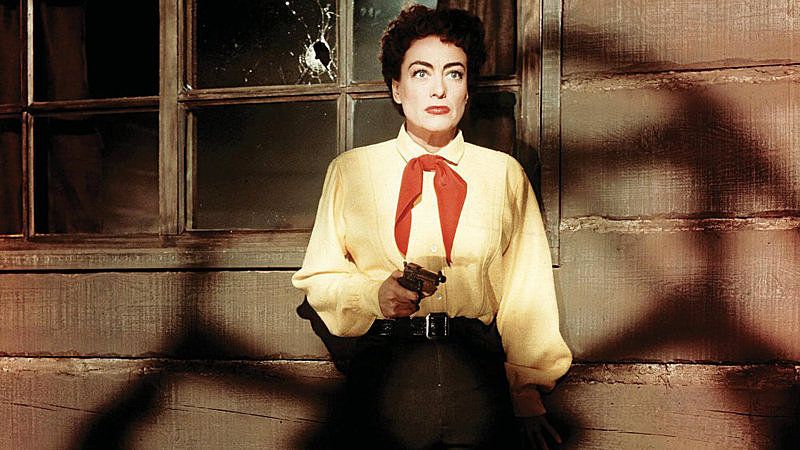NZIFF Week Two, feat. The Wounded Angel, The Greasy Strangler and The Lure
Jacob Powell reports back from week two of the NZIFF, with The Wounded Angel, Wild, Sieranevada, The Greasy Strangler, The Lure, Paterson and Johnny Guitar
Week two of my NZIFF 2016 run saw me zig-zag between the ridiculous and the sublime, typified one afternoon in a random ‘family drama’-themed ‘double feature’, pairing Cristi Puiu’s excellent Sieranevada back-to-back with Jim Hosking’s provocative The Greasy Strangler. Likewise (though on different days) the Civic hosted the sweet contemplative delights of Jim Jarmusch’s Paterson and the altogether different kind of ‘sweets’ on offer in Agnieszka Smoczyńska’s The Lure. Odd bedfellows, but just how I like it.
The Wounded Angel (Emir Baigazin)
Emir Baigazin frames so many of his shots like starkly beautiful paintings. Whether he’s using a doorway, a window, or a mirror, he creatively confines, obstructs, and distances viewer and character as if to say, 'You may see, but you can’t know.' There’s a shot where a father, returning home from a lengthy stay in prison, is reunited with his son. The boy is understandably uncomfortable and Baigazin makes this sense of disconnection visual through his masterful framing: though the pair are facing each other, we see only the back of each, one in the foreground and the other, via mirror, in the background.
Narratively spare and thematically grim, The Wounded Angel is a compelling, contemplative mosaic of boyhood struggle in a similar vein to his equally striking 2013 debut Harmony Lessons. Underlying the film is the afflicted sociopolitical context of 1990s Kazahkstan, outlined in a text preamble as a period rife with crime, poverty, and failing infrastructure—nationwide night-time power outages are a measure specifically repeated at key moments of the film. Taking its title from Finnish artist Hugo Simberg’s most well-known painting, The Wounded Angel is made up of four vignettes, each chaptered at its close with a religious concept (Fate, The Fall, Greed, and Sin), and each of which is accompanied by a section of Simberg’s fresco, Köynnöksenkantajat (Garland of Life) from the interior of Tampere Cathedral.
Weaving separate morality tales out of the lives of four boys from a small impoverished village, Baigazin mixes up the tone of the film contrasting action set out in open, barren landscapes in one tale with another being primarily subterranean or set inside dilapidated industrial structures (heavily reminiscent of sections of Tarkovsky’s Stalker). All four boys are faced with a moral dilemma and Baizagin’s screenplay evokes a weighty sense of contextual inevitability: in such an environment, how can these boys make good decisions? Baizagin’s stroke may not be nearly so elegant as that of spiritual forebear Andrei Tarkovsky but he’s definitely swimming in the same lane.
“Dad, are you going to see Wild now? It’s got a girl and a wolf!” This is a question I've fielded multiple times from my inquisitive seven-year-old, who’s repeatedly perused the NZIFF Programme booklet over the last fortnight. The picture - and idea - of a girl and a wolf, excitingly encapsulated with the term ‘Wild’, had understandably piqued her interest. I have explained to her, also on multiple occasions, that “This is a film for grown-ups.” I wasn’t quite prepared for how true that sentiment would actually be.
A story of self-discovery, personal empowerment, and freedom, Wild’s lead Ania (a fearless performance from Lilith Stangenberg—no really, she mixes it up with an actual wolf for about a third of the runtime!) is jolted out of her passive, invisible existence when she encounters a wolf in a local park. This spark ignites a full-blown obsession leading Ania to shrug off societal expectations (her job, living habits, personal grooming...clothing) as well as the constrained personas she'd assumed due to these. The more she communes with the wolf, and focuses on her primal needs and desires, the more she finds strength and confidence. This discomfiting transformation exposes the weakness and false confidence in those around her: Ania’s more socially-attuned sister’s life is not as together as it appears, and her mildly predatory-seeming boss unexpectedly reveals his own inner shackles.
Writer-director Nicolette Krebitz has crafted a truly transgressive exploration of gender and sexual politics, both in terms of the film’s wolf-as-surrogate-for-freedom-against-socially-accepted-modes-of-identity metaphor and in terms of the taboo-busting action she shoots. This is a film which will undoubtedly be several steps too far for some, but one day, far in the future, I may well watch Wild with my daughter, and what fascinatingly awkward viewing that will be.
There was a point far into Sieranevada’s breezily-lengthy runtime where I realised I’d become so engaged with this frenetic family that I was on the verge of vocally protesting any further delay to the memorial lunch they’d spent several hours waiting to enjoy. Sure, the fact that I went into a three-hour film, starting at 12pm, with a small half-teacup of muesli at 7am being my last repast, may have had something to do with this response. Personal hunger notwithstanding, Cristi Puiu’s magnificent family gathering is packed so densely with delicious detail, and yet moves so swiftly, that the experience is an invigorating one.
Shot mostly in the confines of a cramped apartment, the camera places us right in the thick of all the fractious familial fun. Every sideways grimace, theatrical roll of the eyes, embarrassed brush of a tear from the cheek, and morsel of food sneaked is captured in such a way that we are made to feel like a part of the throng. At the centre of this emotional maelstrom is Lary (Mimi Branescu), eldest son of the departed patriarch Emir. He spends equal measures of his time dispensing medical advice (he’s one of two doctors in this firmly middle-class family), trying to sidestep arguments with his entitled wife, attempting to defuse a plethora of domestic disputes, and gleefully winding up his siblings and cousins. At some point in the proceedings his guard slips exposing his own vulnerability in this time of loss. Most of all he just wants his lunch. But damn it if the lateness of priests, the inappropriateness of younger cousins, or the infidelity of uncles (or is it the hyperactive imagination of aunts?) conspire to keep him hungry. Puiu’s Sieranevada presents characters who exude a sense of shared history, makes excellent use of its confined setting, and, most importantly, delivers dramatic turnings that ring true.
The Lure (Agnieszka Smoczyńska)
‘A Polish body-horror musical about a couple of beautiful, man-eating mermaids who run off and join the house band at an adults only dance club’ — if this single sentence synopsis of The Lure doesn’t instantly prompt you to purchase tickets, then I’m not sure we can ever be film buddies. As curiously, gloriously, ridiculously lurid as it sounds, Agnieszka Smoczyńska’s debut feature is worth watching for its over the top premise and visual sensibility alone.
While The Lure is not all surface fizz, it does lack the depth of a good character piece: the narrative of two mermaid sisters experiencing the lusts and desires of youth, in 1980s Warsaw on their way to America, works moderately well, wrapping in a twisted take on The Little Mermaid and apparently drawing from childhood elements of both the writer and the director (Agnieszka Smoczyńska grew up running amok in a nightclub managed by her mother). The relationship between the savvy, predatory Golden (Michalina Olszańska) and her more naively romantic sister, Silver (Marta Mazurek) feels underdeveloped, exacerbated by a discernible lack of chemistry between the two leads and occasionally wonky dancing in the set pieces (from Mazurek in particular). The film’s musical numbers — from breaking into ‘song and dance’ in the streets to multiple band performances in the club, replete with ‘sexy’ mermaid transformations mid-act — are front and centre, driven by a range of pretty decent original tunes from Polish pop-punk electronica outfit ‘Ballady i Romanse’. So much so, that I occasionally felt like the film was a vehicle for the songs more than the story (Ballady i Romanse is even featured on screen DJing a party near the end of the film). Despite these weaknesses, the madcap production design is completely enthralling, garnering plenty of laughs and incredulous WTF moments. A refreshingly original viewing experience I wouldn’t trade for any amount of polite conversation or fine dancing.
Peddling a similar line of boundary pushing physical grossness to the comedy of Tim and Eric, Jim Hosking’s The Greasy Strangler manages to find its own voice in a blend of this gross silliness alongside characters drawn with real warmth. Another tale of family dysfunction, The Greasy Strangler tells the story of so-called ‘Big Brayden’, who has lived with his volatile father ‘Big Ronnie’ well past the point of normalcy. But then, there's nothing normal about these chaps.
By day, bedecked in matching pink shorts and skivvies (turtle-necks), they host an entirely unconvincing neighbourhood tour, apparently visiting locations significant to various funk legends Ronnie ‘knows’. Ronnie is hot and cold with his adoring son: one minute praising him for being a great son, the next threatening to evict him from the house. Things get extra complicated when Big Brayden gains a girlfriend (his first ever) from an otherwise unpromising tour, prompting jealous fits pique from dad. It’s probably also worth mentioning that Big Ronnie is definitely not a local serial killer known as ‘the greasy strangler’. We know this because, unprompted, Big Ronnie tells Big Brayden so on multiple occasions. It may or may not be related that he also regularly berates his son for not making his food greasy enough.
Both Hosking’s script and his direction work together to achieve a peculiar cadence in terms of dialogue delivery and shooting style. Many shots are held 1...2...3... beats longer than expected, thereby increasing the awkwardness of interactions and giving us a better chance to study facial expressions of the leads, which deliver more than you might expect in such a film. For me the film played as overlong. The first hour is pretty solid but after that it kind of runs out of steam, like the idea has been stretched too thin across a slightly underwritten plot. Regardless, The Greasy Strangler delivers a surprisingly heartfelt central father-son story on the back of a some exemplary gross-out humour, proving once again that inventive puerility can be pretty damn funny.
Who’d have thought a lo-fi drama about a bus-driving amateur poet could strike such resonant chords? Quietly observing the daily rhythms of its eponymous lead, Jim Jarmusch’s Paterson sings a museful melody of a person, a household, a city, and the poetry of life. Paterson (a masterclass in communicating volumes via facial expression from Adam Driver) was born and raised in Paterson, New Jersey — a point touched upon directly in the script at least once but danced around several times. He drives his bus, marvels at his partner Laura (an uplifting performance from award-winning Iranian actress Golshifteh Farahani who co-starred in Farhadi’s About Elly), walks her conniving English bulldog Marvin, observes, listens, reads, and writes. Always writing. Beautiful poetry, enunciating the everyday in exquisitely simple verse (written for the film by one of Jarmusch’s favourite American poets, Ron Padgett).
Paterson is unmistakably a Jarmusch joint through and through: from artfully considered visuals — more exemplary use of mirrors and reflection, some truly remarkable long cross-fades and slow zooms — as also seen in Only Lovers Left Alive to repeating motifs in incidental characters, dialogue, and visual design reminiscent of his work in The Limits of Control to the literate tone and contemplative pace of Ghost Dog and Dead Man. It is no coincidence that Paterson’s literary hero is William Carlos Williams (the New Jersey poet is heavily referenced in film). In Paterson, Jarmusch attempts something of a cinematic realisation of Williams’ epic mid-20th century poem of the same name, which had Paterson’s favourite thinking place, the Passaic Falls, as its central metaphoric image. Sewing these ambitions into the fabric of the film, Jarmusch keep proceedings far from an exercise in dry intellectualism. On the contrary, Paterson is a strong relationship drama with well-drawn core characters, filled with warmth and humour. This truly is top-shelf Jarmusch, worth savouring.
Johnny Guitar (Nicolas Ray)
Nicholas Ray’s 1954 western, Johnny Guitar, rides high on stellar performances by the two women at its centre: a fiery Joan Crawford as a no-nonsense gun-toting saloon owner, Vienna, and 1950s TV regular Mercedes McCambridge as Emma Small, an embittered town banker with an axe to grind. A genre oddity in several ways, Ray’s film paints an alternate version of ‘the West’ to that often portrayed in films from this era by delivering a film where the narrative and action is driven by two women. Vienna is a fiercely independent businesswoman who has faced down the odds to make a life for herself in a town afraid of the future she represents. For various reasons she finds herself on the wrong side of the equally strong-willed Emma who, after the death of her brother, makes it her mission to rid the town of Vienna and anyone connected with her.
Despite there being a gang of riders led by the amusingly monikered ‘Dancin’ Kid’(Scott Brady) and a local land baron, McIvers (Ward Bond), who has ‘more than thirty guns at his call’, there's not only a noticeable lack of shooting but, more importantly, there's a distinct unwillingness to kill, bad guys or no. There's a scene where a newly-formed posse are chasing down the kid and his gang, and Emma wants them to head straight to Vienna’s saloon to exact ‘justice’. McIvers tells her something akin to: “These men aren’t killers. They’ll need to be cold, tired and hungry enough to do the work you want them to”. In the end it's Emma who harangues the men into action with her sharped-tongued jibes and single-minded determination.
I wonders how much of this genre subversion came from the influence of blacklisted writer Ben Maddow (credited here as his HUAC era alterego ‘Philip Yordan’). This off-piste sensibility makes the film uniquely engaging, and watching Crawford’s Vienna and McCambridge’s Emma square off, with both words and revolvers, is quite a treat. Did I mention there's a wandering rider named Johnny Guitar (Sterling Hayden), who actually opens the film? Despite being the title character, and fairly central to much of the action, Johnny’s most important function is as dialogue partner for Vienna.
Johnny Guitar’s dust ridden Trucolor visuals are good match for its narrative action, but if the film ends a little abruptly, indulging a few of the more usual genre tropes, this can be forgiven for the film’s many excellent dialogue exchanges. Well worth revisiting on the big screen.



